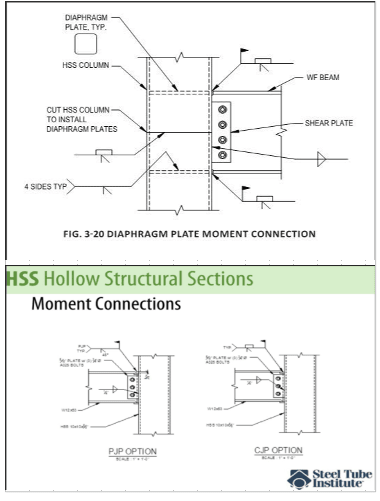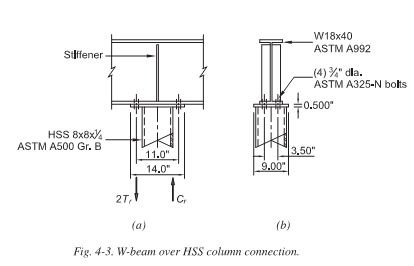I was wondering if there were any design aids for setting a steel beam on a steel post. I would think this should be possible but there is nothing provided by AISC (At least that I could find). I have also searched in here to see if someone mentioned it but I couldn't find anything. My thinking was to have the beam rest on a plate welded to an hss column and add a stiffener at the end of the beam if needed.
I have a 38 foot W21x121 Beam that has a extended end plate to a W14x90. This is for a residential house and it's kind of bulky and would rather use a hss column if possible. This is used as a moment frame as well as a header for a 32 foot opening.
I have a 38 foot W21x121 Beam that has a extended end plate to a W14x90. This is for a residential house and it's kind of bulky and would rather use a hss column if possible. This is used as a moment frame as well as a header for a 32 foot opening.


